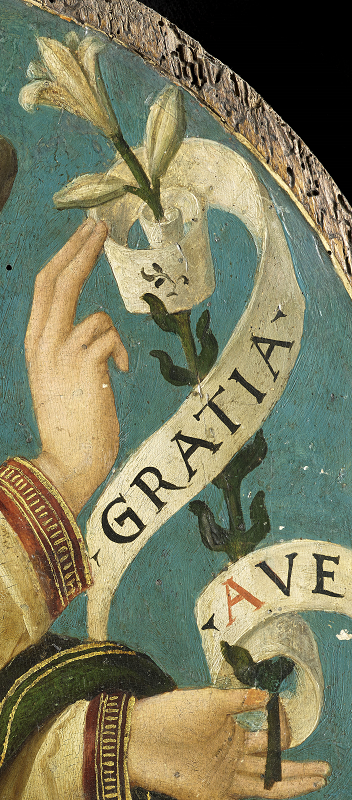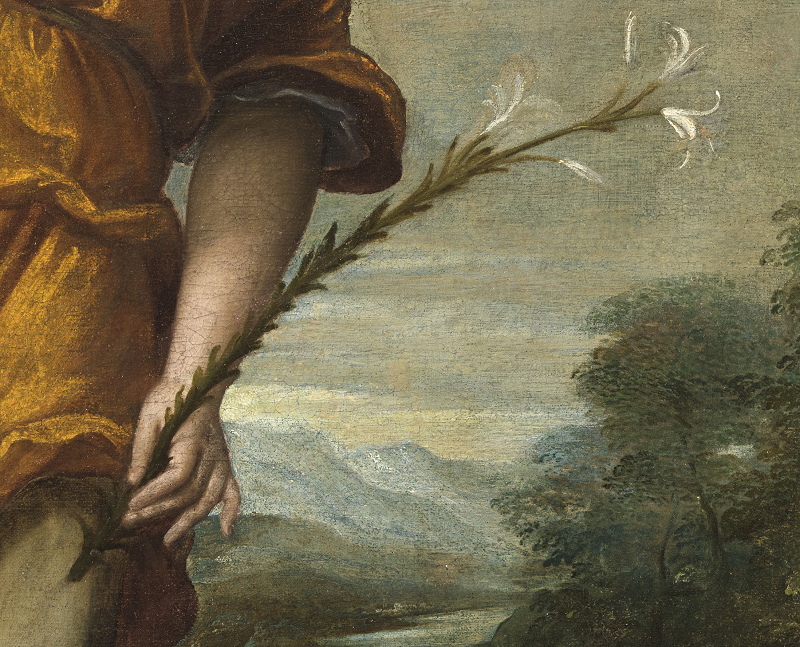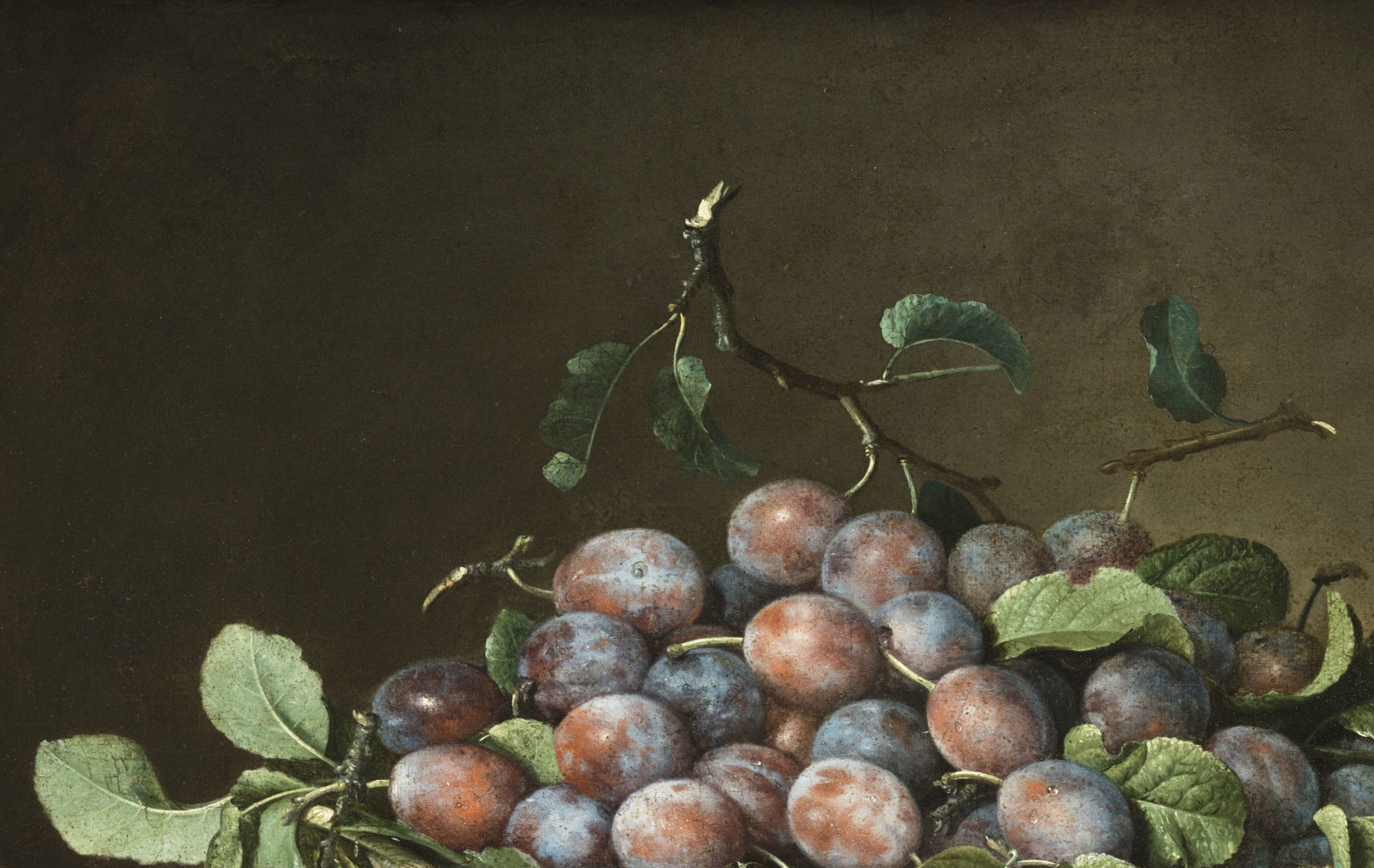
Lys blanc, Ange de l’Annonciation, Gandolfino d’Asti

Lys blanc, l’Annonciation, Simone Peterzano
Lilium candidum
Le Lys de la madone, ou lis blanc, est une plante ornementale appréciée depuis les Egyptiens. En France, la fleur de lys apparaît pour la première fois sur le sceptre du petit fils de Charlemagne au IXe siécle. La Royauté française adopte ensuite cet emblème, souvent confondu avec l’iris.
L’Eglise catholique médiévale a associé à la fleur de lys à la Vierge Marie. L’iconographie religieuse a pris pour habitude de représenter un lys blanc auprès de la Vierge Marie ou dans les mains de l’ange Gabriel, ange de l’Annonciation. La fleur de lys devient alors le symbole de la pureté et de l’amour chaste.

The Madonna, or white, lily has been a popular ornamental plant since the Egyptians. In France, the fleur-de-lis, simply translated as lily, appears for the first time on the scepter of the grandson of Charlemagne in the 800s. The French Royalty then adopted this emblem, often confused with the iris.
The medieval Catholic Church associated the fleur-de-lis with the Virgin Mary. Religious iconography has taken to representing a white lily next to the Virgin Mary or in the hands of the Archangel Gabriel at the Annunciation. Here the fleur-de-lis is the symbol of purity and chaste love.

Die Madonnenlilie oder auch Weiße Lilie ist seit den Ägyptern eine beliebte Zierpflanze. In Frankreich taucht die Lilie erstmals im 9. Jahrhundert auf dem Zepter des Enkels Karls des Großen auf. Das französische Königshaus übernahm dann dieses Emblem, das oft mit der Iris verwechselt wird.
Die mittelalterliche katholische Kirche verband die Lilie mit der Jungfrau Maria. Die religiöse Ikonographie hat sich dazu entwickelt, eine weiße Lilie neben der Jungfrau Maria oder in den Händen des Engels Gabriel, des Engels der Verkündigung, darzustellen. Die Lilie wird dann zum Symbol für Reinheit und keusche Liebe.
